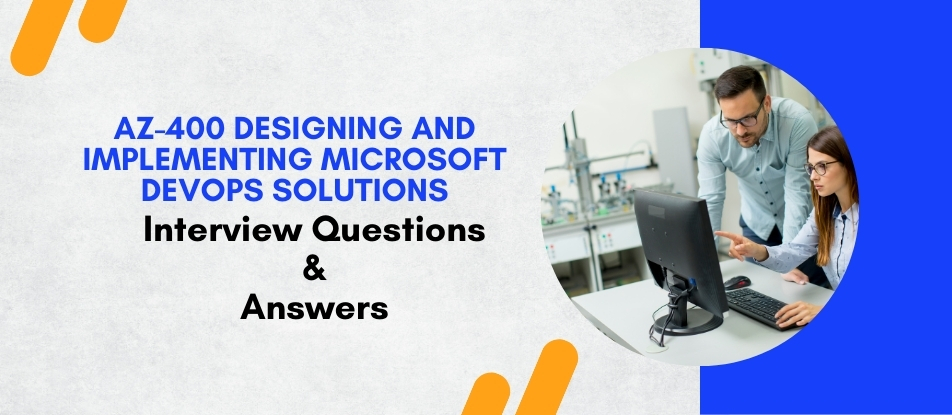
The AZ-400: Designing and Implementing Microsoft DevOps Solutions course equips professionals with the skills to design, implement, and manage DevOps processes on Microsoft Azure. This course covers topics such as continuous integration, delivery, deployment, infrastructure as code, and monitoring. Learners will also explore GitHub integration, container orchestration, and secure DevOps practices, preparing them for the AZ-400 certification exam and enhancing their expertise in Azure DevOps solutions. Top of Form
AZ-400 Designing and Implementing Microsoft DevOps Solutions Interview Questions Answers - For Intermediate
1. What is DevOps?
DevOps is a collaborative approach that integrates software development (Dev) and IT operations (Ops) to improve the quality and speed of delivering software products.
2. What are the key principles of DevOps?
The key principles of DevOps include automation, continuous integration (CI), continuous delivery (CD), and a culture of collaboration and communication.
3. What is CI/CD?
CI/CD stands for Continuous Integration/Continuous Delivery, which is a set of practices that automate the process of integrating code changes into a shared repository (CI) and delivering applications to production environments (CD).
4. Explain the concept of version control.
Version control is a system that tracks changes to files and directories over time, allowing multiple developers to collaborate on a project and manage different versions of the codebase.
5. What is Git?
Git is a distributed version control system widely used for tracking changes in source code during software development. It enables collaborative development and supports branching and merging workflows.
6. What is a repository in Git?
A repository, or repo, is a storage location where Git stores the history and metadata of a project, including all the files and directories associated with it.
7. What are branches in Git?
Branches in Git are separate lines of development that diverge from the main codebase to work on features, fixes, or experiments without affecting the main branch (usually called "master" or "main").
8. Explain the difference between Git merge and Git rebase.
Git merge combines changes from different branches into a single branch, preserving the commit history of each branch. Git rebase integrates changes by moving the commits of one branch onto another, resulting in a linear commit history.
9. What is Continuous Integration (CI)?
Continuous Integration (CI) is a software development practice where developers integrate their code changes into a shared repository frequently, usually several times a day. Each integration is verified by automated build and test processes.
10. What is Continuous Delivery (CD)?
Continuous Delivery (CD) is an extension of CI that ensures that code changes are automatically built, tested, and deployed to production or staging environments in a reliable and repeatable manner.
11. Explain the concept of Infrastructure as Code (IaC).
Infrastructure as Code (IaC) is an approach to managing and provisioning infrastructure resources (e.g., servers, networks, and storage) using machine-readable configuration files or scripts, enabling automation and versioning of infrastructure changes.
12. What are some common CI/CD tools?
Common CI/CD tools include Jenkins, Azure DevOps, GitLab CI/CD, Travis CI, CircleCI, and GitHub Actions.
13. What is Azure DevOps?
Azure DevOps is a cloud-based suite of development and collaboration tools offered by Microsoft, which includes services for version control, CI/CD, agile planning, and collaboration.
14. How does Azure DevOps support CI/CD?
Azure DevOps provides pipelines for automating build, test, and deployment processes, along with version control, issue tracking, and collaboration tools to support CI/CD workflows.
15. Explain the concept of a pipeline in Azure DevOps.
A pipeline in Azure DevOps is a series of steps or tasks that automate the process of building, testing, and deploying applications. It consists of stages, jobs, and tasks defined in YAML or through a visual interface.
AZ-400 Designing and Implementing Microsoft DevOps Solutions Interview Questions Answers - For Advanced
1. What are the key principles of DevOps, and how does Azure DevOps support these principles?
The core principles of DevOps are collaboration, automation, continuous integration/continuous delivery (CI/CD), infrastructure as code (IaC), and monitoring. Azure DevOps supports these principles by providing a suite of services including Azure Repos for version control, Azure Pipelines for CI/CD, Azure Artifacts for managing dependencies, and Azure Boards for work item tracking. Additionally, it integrates with other Azure services to facilitate IaC using Azure Resource Manager (ARM) templates and tools like Terraform. Azure Monitor offers robust monitoring capabilities for ensuring system performance and reliability.
2. Can you explain how Blue-Green deployments work in Azure DevOps?
Blue-Green deployments aim to minimize downtime and reduce risk during software updates. Two identical environments are used: Blue (current production) and Green (new version). When the new version is ready, traffic is switched from Blue to Green. If an issue arises, traffic can be reverted to Blue, ensuring minimal disruption. In Azure DevOps, this can be implemented using Azure Pipelines in conjunction with Azure Traffic Manager or Application Gateway to route traffic between the environments, ensuring a smooth switch and easy rollback if needed.
3. What are the different ways to implement CI/CD in Azure DevOps for microservices architecture?
CI/CD for microservices in Azure DevOps can be implemented using multiple pipelines, one for each microservice. Azure Pipelines enable independent build, test, and deployment of each microservice, facilitating faster development and testing cycles. Docker containers and Kubernetes (AKS) are commonly used to package and orchestrate the microservices, and Helm charts can automate Kubernetes deployments. Additionally, Service Mesh tools like Istio can be integrated for managing microservices' traffic, security, and observability.
4. How can you implement Infrastructure as Code (IaC) using Azure DevOps, and what are the benefits?
Azure DevOps supports IaC through tools like ARM templates, Terraform, and Bicep. ARM templates are JSON files that define infrastructure resources, and they can be integrated into Azure Pipelines to automate deployment. Terraform and Bicep provide declarative languages for defining infrastructure and can also be used with Azure Pipelines. The benefits of IaC include version control for infrastructure, consistency in environment provisioning, faster deployment times, and reduced human error. IaC also enables easier disaster recovery and environment replication.
5. What is GitFlow and how can it be used with Azure Repos?
GitFlow is a branching strategy for Git repositories that supports parallel development and feature isolation. It includes multiple branch types such as master, develop, feature, release, and hotfix. In Azure Repos, GitFlow can be implemented by setting up branch policies and using Pull Requests (PRs) to merge code from feature branches to develop and master branches. Automated CI/CD pipelines can be triggered based on branch policies to ensure that changes are tested and deployed automatically, maintaining code quality.
6. Explain the role of Azure Key Vault in DevOps pipelines and how it ensures security.
Azure Key Vault is a cloud service that securely stores and accesses secrets, such as API keys, passwords, certificates, and encryption keys. In DevOps pipelines, secrets are crucial for accessing sensitive resources, and storing them in Key Vault ensures they are protected from unauthorized access. Azure DevOps pipelines can integrate with Key Vault using service connections, allowing pipelines to retrieve secrets dynamically during execution without exposing them in code or configuration files, thereby enhancing security.
7. What are the key components of Azure Kubernetes Service (AKS), and how does Azure DevOps integrate with it?
Azure Kubernetes Service (AKS) is a managed container orchestration service that simplifies the deployment and management of Kubernetes clusters. Key components of AKS include nodes (virtual machines), pods (containers), and the Kubernetes control plane. Azure DevOps integrates with AKS through Azure Pipelines to enable automated container build, testing, and deployment workflows. Helm charts or Kubernetes manifests can be used to define the desired state of the cluster, and Azure DevOps pipelines can automate these deployments using Kubernetes tasks.
8. How would you implement rolling deployments in Azure DevOps?
Rolling deployments involve updating instances of the application incrementally, ensuring that some instances remain operational while others are being updated. In Azure DevOps, rolling deployments can be implemented using Azure Pipelines in combination with Kubernetes, App Service, or Virtual Machine Scale Sets. During the deployment, instances are updated in batches, and traffic is continuously routed to operational instances. Rolling deployments reduce downtime and allow easier rollback in case of failure.
9. How does Azure DevOps support automated testing, and what testing strategies can be implemented?
Azure DevOps provides several options for automated testing, including integration with popular test frameworks (e.g., NUnit, MSTest, and Selenium) and tools like Azure Test Plans. Tests can be integrated into CI/CD pipelines to ensure code quality at various stages, such as unit tests, integration tests, and UI tests. Advanced testing strategies include canary releases (gradual rollout) and chaos engineering, where systems are intentionally disrupted to ensure resilience under failure conditions. Azure Pipelines also support continuous testing by running tests automatically with every code change.
10. How can you implement secure DevOps (DevSecOps) practices in Azure DevOps?
DevSecOps integrates security practices into the DevOps pipeline. In Azure DevOps, this can be achieved by incorporating security checks at every stage of the development lifecycle. Tools like SonarQube, WhiteSource, or Azure Security Center can be integrated into Azure Pipelines to perform static code analysis, dependency scanning, and vulnerability assessments. Additionally, secrets management using Azure Key Vault, role-based access control (RBAC), and Azure Policy can ensure compliance and prevent security breaches.
11. What is Canary Deployment, and how can you set it up using Azure DevOps?
A canary deployment gradually releases a new version of the software to a small subset of users before rolling it out to the entire user base. This reduces the risk of exposing the majority of users to potential issues. In Azure DevOps, canary deployments can be set up using Azure Pipelines with deployment strategies configured to route a small percentage of traffic to the new version via Azure Traffic Manager or Application Gateway. Monitoring tools like Azure Monitor can track the performance of the canary release before a full rollout.
12. What is a service hook in Azure DevOps, and how can you use it in CI/CD pipelines?
A service hook in Azure DevOps is a way to trigger external services in response to certain events, such as code commits, pull request completions, or work item updates. In CI/CD pipelines, service hooks can be used to integrate with services like Slack, Microsoft Teams, or custom webhooks. For example, a service hook can notify a development team on Slack when a new build starts or finishes, providing real-time feedback on the pipeline status.
13. Explain how Azure DevOps handles multi-cloud or hybrid cloud deployments.
Azure DevOps supports multi-cloud and hybrid cloud deployments by integrating with various cloud providers such as AWS and Google Cloud. Azure Pipelines can be configured to deploy applications to multiple clouds using Terraform, ARM templates, or the respective cloud providers’ deployment services (e.g., AWS CloudFormation). Hybrid cloud scenarios, where on-premises data centers and cloud environments coexist, are also supported through tools like Azure Arc, allowing the management of on-premises and cloud resources in a unified manner.
14. How can you implement feature toggles (feature flags) in Azure DevOps pipelines?
Feature toggles allow for the selective enabling or disabling of features in an application without deploying new code. In Azure DevOps, feature flags can be implemented using tools like LaunchDarkly or Azure App Configuration. These tools can be integrated into Azure Pipelines to manage feature releases. Developers can deploy code with features disabled by default and enable them later in a controlled manner for specific users or environments, allowing for safer and more flexible releases.
15. What are the advantages of using Azure Artifacts in Azure DevOps, and how can it streamline dependency management?
Azure Artifacts is a service in Azure DevOps that enables the management of dependencies, such as NuGet, npm, and Maven packages. The advantages include storing and sharing private or public packages within your organization, ensuring consistency in dependency versions, and integrating directly into Azure Pipelines for CI/CD. By using Azure Artifacts, teams can ensure that the correct versions of dependencies are used across all environments, simplifying the development process and reducing errors caused by version conflicts.
Course Schedule
| Jan, 2026 | Weekdays | Mon-Fri | Enquire Now |
| Weekend | Sat-Sun | Enquire Now | |
| Feb, 2026 | Weekdays | Mon-Fri | Enquire Now |
| Weekend | Sat-Sun | Enquire Now |
Related Courses
Related Articles
- How Microsoft Azure Data Engineer [DP-203] Prepares You for Big Data, Streaming & Analytics
- 10 Important ITIL (Information Technology Infrastructure Library) Interview Questions with Answers
- Enhance Your Skills with Apache Spark Certification Training
- Advance Your Skills with Forger Access Management Training
- Enhance your Company's Productivity with RPA - Automation Anywhere
Related Interview
Related FAQ's
- Instructor-led Live Online Interactive Training
- Project Based Customized Learning
- Fast Track Training Program
- Self-paced learning
- In one-on-one training, you have the flexibility to choose the days, timings, and duration according to your preferences.
- We create a personalized training calendar based on your chosen schedule.
- Complete Live Online Interactive Training of the Course
- After Training Recorded Videos
- Session-wise Learning Material and notes for lifetime
- Practical & Assignments exercises
- Global Course Completion Certificate
- 24x7 after Training Support


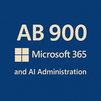
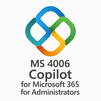
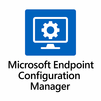
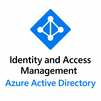


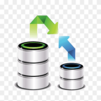


 Join our Live Instructor-Led online classes delivered by industry experts
Join our Live Instructor-Led online classes delivered by industry experts